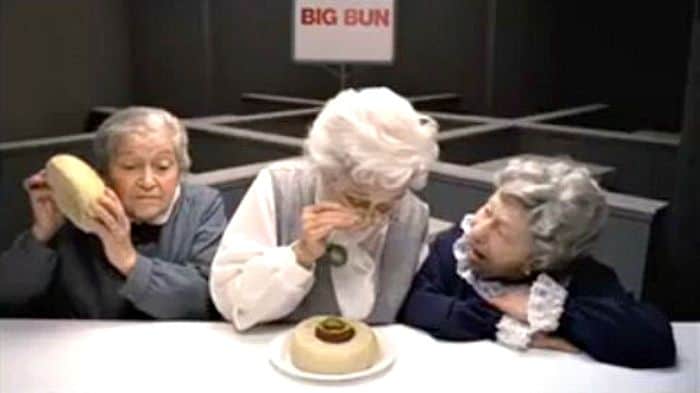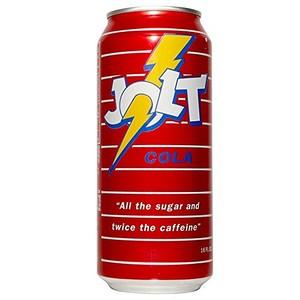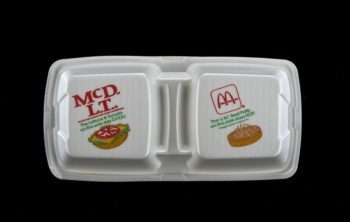
Many iconic commercials and catchphrases have existed over the years but in the 1980s one rose above them all.
Where’s The Beef? Was a commercial catchphrase for Wendy’s that came out in 1984 that was used to question other fast food companies for their lack of meat. It starred unknown actress Clara Peller and was created by the groundbreaking Joe Sedelmaier, skyrocketed Wendy’s profits, and became one of the most famous catchphrases of all time.
There are many iconic catchphrases from commercials that have been used over the years. Some that come to mind include:
- Whassuuuup!
- I’m Lovin’ It
- Finger-Lickin’ Good
- They’re G-R-R-R-reat!
- Just Do It
- A Diamond Is Forever
But in the 1980s, one catch phrase seemed to rule them all – “Where’s The Beef?”.
If you grew up in the 80s, you know how iconic this catchphrase was and it had a huge impact on pop culture throughout the decade and beyond. It was repeated everywhere and made Clara Peller – the woman who uttered the phrase – world famous.
Where’s The Beef? Continued to grow and would come to be associated with questioning things such as ideas, events, or products as to if they had any substance. The story of Where’s The Beef is about how catchphrases can spread like wildfire and it’s also the story of an unlikely celebrity and an advertising manager who changed the way commercials are made.
This is the story of Where’s The Beef?
Why Was The Where’s The Beef Commercial Needed?
I love Wendy’s. Outside of higher-end burger places, I still think it’s the best of the fast food burgers. I realize it’s commercially made food, but it just has a touch more sense of freshness to it.
Obviously, McDonald’s and Burger King are the two main leaders of the fast food burger market and they were really pushing
They wanted to showcase that their hamburger had more beef and that McDonald’s and Burger King were hiding their lack of meat by using larger buns. Wendy’s wanted to call them out for doing this, while at the same time showcasing that they had more beef.
So how were they going to do this?
It All Starts With Joe Sedelmaier.
Sedelmaier was an art director at Young & Rubicam and J. Walter Thompson which are big advertising companies and we’re talking about Madmen level of significance here. Commercials today will always feature glamorous looking people and models as they try to create an idealistic impression on people to sell their products. These days though, we get a good mix of that and more comedic based advertising like you see in a lot of Super Bowl sports. You’re just as likely to see a regular looking person as you are a Kardashian in an ad.
This seems pretty normal, but this was not the case, especially in the 70s and 80s. During this time period, ALL commercials would use perfect looking people to create an image of perfection for whatever product was being sold. Just picture the old Double Mint Gum ads to get an idea of this shiny and perfect existence they were trying to portray.
Sedelmaier was the guy who changed all this, and he was the one who fundamentally changed the appearance of how commercials looked. Instead of using plastic, mannequin looking actors so that the whole ad looked like a soap opera, he would cast regular looking, and sometimes not attractive people.
Again, this seems like not a big deal today but this was groundbreaking through the 70s and into the 80s. He also gave commercials a looser feel instead of making them look like a glossy, movie-like production. He wanted to make them more fun and engaging as opposed to looking like every other commercial you’ve ever seen. His commercials would include things like:
- People making strange expressions
- Sped up and slow down movements
- Exaggerated loping walks
He would state “a commercial is something you watch when you sit down to watch something else — you should at least be entertained,”.
It was this approach that made him a rock star in the advertising world leading him to win multiple Clio awards (like Don Draper!) and made him a highly sought after talent. Here’s an article from the New York Times from 1992 discussing his groundbreaking work being awarded for it.
Sedelmaier was the man behind the FedEx “fast-talking man” commercials featuring John Moschitto from the iconic Micro Machines commercials and he was just what Wendy’s would need to deliver their message.
commercials
Creating The Where’s The Beef Commercial & The DIfferent Variations
The project was put in place by Wendy’s international vice president, William Welter who led the marketing team going into the campaign. Sedelmaeir get’s a majority of the credit – as he deserves – but he served as the director of the commercial and other people such as Welter were a big part of all this.
Assisting Welter was Dan Dahlen, a 35-year advertising veteran who worked for the Wendy’s ad team from 1982 to 1986. The team was made up of Welter, Dahlen, Bruce Ley, Cliff Freeman (from an outside advertising agency) and Sedelmaier.
They wanted to showcase that the other fast-food places were hiding the meat by the size of their bun and they wanted to use regular people in the ad that Sedelmaier had made so effective. It started out as a commercial featuring a young couple, they were regular looking people – not models per se – but the ad was just seen as not funny.
For the next versions of the ad, Freeman came up with the storyboard for two different versions of the commercial after they ditched the young couple.
The one version featured a trio of aged men with one of them, an elderly bald man, saying “Thanks, but where’s the beef?” It didn’t seem to connect very well, but they had another version that they had filmed with three older ladies including one named Clara Peller that Freeman had discovered.
Before continuing with the process of the commercial let’s take a quick look at the iconic Clara Peller
Who Was Clara Peller?

Peller, who was born in 1902 was a manicurist and became a character actor but had spent 35 years working for a beauty salon in Chicago. A commercial being filmed in Chicago needed to be set in a barbershop and needed a manicurist and took a whim on casting the 80-year-old Pellar to play the part.
The agency doing the commercial loved her no-nonsense manners and unique voice and thought they would be able to make use of her and signed her to an agency contract. Peller then started to be used in a bunch of different TV ads even though her difficulty hearing, and ability to only recite short lines of dialogue, limited what she could do on camera. One of her first big parts was that of a comical cleaning lady used in the Massachusets state lottery game called “Megabucks”.
All of these ads caught the eye of Freeman and she was cast in the Wendy’s commercial and she would be instrumental in the success of the commercial, of Wendy’s, and one of the biggest catchphrases ever created. There would be some issues surrounding how she would be compensated but we’ll get back to that in a minute.
Getting The Commercial On The Air
So there were two versions of the commercial now ready and it was taken to the ad committee which was made up of six executives and ten franchisees. It was rejected. Some concerns were that customer surveys done by Wendy’s showed that the people weren’t all that concerned about the size of the patties. The ad committee also thought that the version with Peller was a little too abrupt due to her louder and harsher way of speaking.
They reworked some stuff and the second versions of the commercials got the thumbs up. Many probably don’t remember this but the version with the trio of men actually aired alongside the version with Pellar. They were both launched in January 1984.
But it didn’t take long and the version with Peller snowballed making them dump the version with the old men and focusing on the trio of older ladies. The ad was only intended to run for a short while but the explosion in popularity allowed it to run for 10 weeks.
The Massive Impact Of The Where’s The Beef Commercial
Advertising is tough today. There are so many things vying for our attention that advertisers don’t know where to even be in order to get the most eyes on their products. There are so many TV and cable stations, along with specialty channels that people are always cycling through. There are now 5 significant streaming services that get a lot of peoples attention and it’s hard to narrow down where your audience is. Do you stay on terrestrial TV? Advertise on YouTube? There’ are a lot of decisions to be made.
In the 80s, with pretty much only three networks, it was much easier to get your message across to a vast majority of the viewing public. There was so little else vying for peoples that anything that was seen on network television could blow up by the next day. Entire careers could be made by one good musical performance, or stand up comedy set. You could be an unknown comic, have a good set on Johnny Carson, and the next day you were a household name.
This was the case with the Where’s The Beef commercial. EVERYONE saw it, and everyone bought into it embracing the uniqueness of the ad and of Peller’s delivery of three words. It caught on so fast that it became a cultural phenomenon and made Peller somewhat of a cult star.
This paid off big time for Wendy’s as every Wendy’s restaurant was doing at least 10% more sales in 1984 than they were in 1983 and overall sales jumped by 31% to $945 million worldwide by 1985.
The Cultural Impact Of Where’s The Beef
So we’ve talked about how in the 80s if a commercial made a big splash chances are everyone was talking about. Where’s the beef would be mentioned on late night talk shows and even turned into a song. A Nashville songwriter named Coyote McCloud recorded and performed his version of Where’s The Beef and it was a pretty big hit.
Where’s the beef then crept its way into the 1984 presidential election.
During the primaries of the spring of 1984 democratic candidate and former vice-president Walter Mondale used the phrase, to sum up that the program policies put forward by opponent Gary Hart were lacking in substance. This was at the height of the popularity of the commercial so it was a great way to tap into the public consciousness by using a topical phrase that also was a pretty cutting jab.
This all happened during a televised debate just before the New York and Pennsylvania primaries. Hart was seen as being in a similar mold to John F Kennedy especially in appearance and his platform was based on the concept of “new ideas”. He had gone from a dark horse to more of a threat and he kept pushing the new ideas viewpoint in all his debates. Mondale seemed like he was waiting for this and after Hart repeated it during the debate Mondale leans over and says:
“When I heard your new ideas, I’m reminded of that ad, ‘Where’s the beef’?”.
This seems crazy but Mondale’s use of Where’s the beef? Would end up earning the Democratic nomination. The two sides were both using their slogans which made Hart have to physically show his policy papers and tell him, “here’s the beef”. Mondale kept pushing about Where’s the beef when it came to Hart’s policies that the public started seeing it the same way and it cast doubt on Hart’s new ideas.
The Fall Out Between Wendy’s & Clara Peller
You think with such a monster commercial that Wendy’s would have driven it into the ground but they actually backed off and pulled the commercial. They also didn’t make countless new versions of it because they didn’t want Peller to become overexposed.
They still wanted to use Peller and capitalize on the popularity of both she, and the catchphrase so they offered her a three-year contract to be an ambassador For Wendy’s. This would involve her to appear at new openings and any big events alongside Wendy’s founder Dave Thomas.
Peller was obviously a hot commodity and appeared on Saturday Night Live, TV appearances, and all kinds of interviews. She appeared in the low-budget 1985 movie “Moving Violations”, and she was the guest timekeeper at WrestleMania 2 at the battle royal held in Chicago’s Rosemont Horizon.
The thing is it seemed she didn’t make that much money from the actual commercial.
For the initial TV spot, Peller made the standard day wage for an actor of $317.40. When she started doing the promotional work Peller said that she was paid $30,000 for the first two commercials she did plus profits from the product tie-ins. Wendy’s said that they had paid here nearly $500,000 for all the work she did with them, a number that Peller had denied.
Things fall apart when Peller ended up making a commercial for
This commercial came out in 1985 and Peller stating that “she found it” – referring to the beef – was enough for Wendys to believe that she had violated her contract. According to them, it implied “that Clara found the beef at somewhere other than a Wendy’s restaurant.” Wendy’s canceled her contract and when announcing this dismissal Wendy’s stated that,
“Clara can find the beef only in one place, and that is Wendy’s”.
Ouch.
Peller points out that she had made Wendy’s millions and millions of dollars and that she was not appreciated by them which is hard not to agree with – but I guess Dave Thomas has real “f**K you money”.
The Legacy Of Clara Peller & Where’s The Beef
Following all of this, Wendy’s would enter into a big two-year sales slump. I’m not sure if people became aware of how Wendy’s had treated her or if it was more about Where’s the beef just being a passing fad. I’m more likely to think it was the latter as catchphrases can come and go and it tends to be more about the catchphrase than the brand itself.
Wendy’s said it would take 5 years until they recovered and were able to create brand awareness again. This time it was due to those awful commercials featuring Dave Thomas. I thought they sucked, but they clearly did the trick.
Peller would sadly pass away in August of 1987 but she left behind a pretty amazing legacy. She was THE catchphrase of the 1980s and part of one of the most iconic lines, and ads, of all time. I think Wendy’s owes her a lot and Where’s the beef still pops up till this day.



